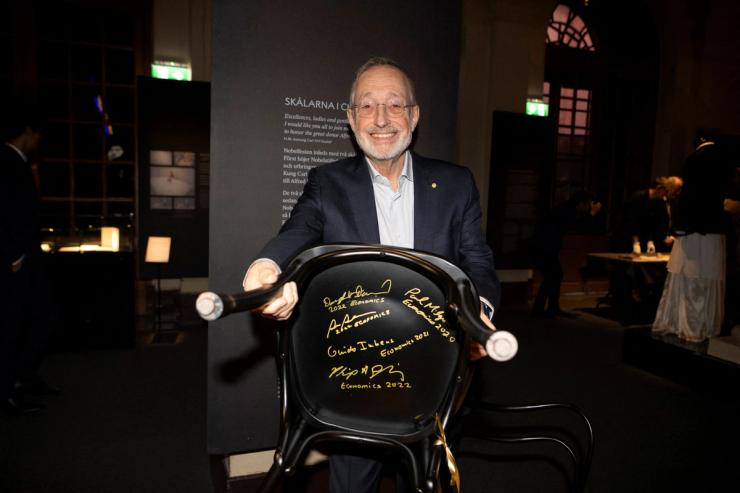The Scene
Just before Google wrapped up the recent three-week US antitrust trial, it called a star witness to the stand who has won a Nobel prize and an Emmy.
The unusual combination of accolades (and there are more) belongs to Paul Milgrom, a Stanford economist known for revolutionizing the field of auctions, and, in the last few years, trying to solve California’s water shortage.
Milgrom’s company, Auctionomics, is at the forefront of an increasingly important field, sometimes referred to as market design, that is set to play an outsized role in the next AI-enabled wave of commerce.
Milgrom’s specialty is using complex mathematics and, more recently, software algorithms, to create the right incentives to make the most complicated auctions go smoothly. Over the years, he also helped shape the online advertising industry by working with dot-com companies to build the marketplaces that eventually became the flourishing ad tech industry.
Colleagues say Milgrom, despite his status, has remained grounded and capable of describing his complicated field in ways anyone can understand — an ability that made him particularly suited for the witness stand last week.
During the Google antitrust trial, Milgrom picked apart the government’s assertions that the company had abused its power, essentially arguing that the prosecution had misinterpreted changes Google made to its advertising auctions over the course of many years. Rather than anticompetitive, Milgrom argued, they were the right choices at the time, given the current technology, to avoid abuse of the system.
During the testimony, US District Judge Leonie Brinkema asked him to explain an aspect of Google’s past auctions, where bidders get one chance to offer the maximum price they would pay for an ad. The winning bidder only has to pay the price of the next lowest bid. This is known as a “sealed bid, second price auction.”
The system is designed, Milgrom testified, to incentivize participants to bid honestly based on what they are willing to pay. The result is almost the same as a traditional “ascending auction” but requires less back and forth, allowing the auction to take place in a millisecond with little risk of technical glitches. (Otherwise, the ad would take too long to appear or slow down a website).
“Now, I still have a question,” Brinkema said. “If I am in a sealed bidding situation and $7 is what I’m willing to pay for this item, you put in a $3 bid. And I win the bid at $7, why am I not paying the $7?”
“If you made a rule that said you have to pay the amount that you bid, then you wouldn’t have bid $7, you would have bid something different,” Milgrom said. “You would say, gee, why would I bid $7, you know, that’s my maximum. It’s only worth $7 to me. I can get it for $7 at the local store. I’m trying to get a bargain here. I’ll bid $5 and see if I can win for that price.”
“Now I understand. Thank you,” Brinkema responded.
Auctionomics co-founder and CEO Silvia Console Battilana declined to speak about the Google case specifically, but she said taking on the client was a no brainer. The Google ad system is “the holy grail of all auctions,” she said. “You get to reproduce the whole history and everything they did. You’re working on the queen of all auctions.”
Step Back
Milgrom is most famous for his work on the US Federal Communications Commission’s spectrum auctions, which paved the way for the mobile web and the streaming industry by transferring ownership of the airwaves from television stations to data providers.
He figured out how to create a mathematically derived web of incentives to achieve the desired outcome, all while making every participant feel like the process was easy to understand and fair. And for that, an Emmy was added to his resume this year.
Despite Milgrom’s fame within his field and the broader impact of his work, Auctionomics has flown relatively under the radar, even if Milgrom did briefly become an internet sensation when the moment he found out he won the Nobel Prize was recorded by his doorbell cam.
Robert Wilson, who shared the prize with Milgrom, rang his colleague’s doorbell in the middle of the night. “You’ve won the Nobel Prize and so they’re trying to reach you,” Wilson said, still wearing his pajamas.
“Wow. Yeah. Ok,” Milgrom responded through his doorbell.
Aside from that brief stint of stardom, Milgrom has not sought the spotlight, nor has he tried to scale Auctionomics into a much larger company.
Most of Auctionomics’ work is confidential and its staff is relatively small, relying on economics and computer science professors, who work part-time on specific projects.
The idea for Auctionomics came in the wake of the financial crisis, when Milgrom spoke with the Treasury Department about designing an auction to sell off distressed assets.
He asked Console Battilana, a PhD student he had worked with, to coffee in Palo Alto and explained that he needed to create a company in order to do the consulting work. Console Battilana had shown entrepreneurial flair by running two side hustles — an events business called Netonomic and a college prep course — while working toward her doctorate. He asked if she’d like to run his company.
The distressed asset sale never happened, but Auctionomics soon had other clients.
The company got its start with British telecom firm Vodafone. It wanted Auctionomics to help it bid on spectrum auctions, which used a design that Milgrom invented.
Using machine learning algorithms to run simulations of the auctions to figure out the best strategy, Auctionomics was able to reduce the price Vodafone paid for wireless spectrum.
In one early case, Auctionomics helped discover collusion in auctions over slot machine licenses in Australia.
While Auctionomics itself won’t start taking on outside investors, Console Battilana says the company is making plans to become one. The company’s vision, she says, is to become the YCombinator of auction design startups.
Milgrom and Auctionomics also have a pet project: The water scarcity in the Western US. It’s a problem Milgrom and his team believe could be solved with better market design. For instance, some farmers need to use water to keep the rights to it, so they needlessly waste it just to keep future rights.
Milgrom is also working with a startup called OneChronos, which uses market design principles in equities trading, but believes one day that they’ll be used to set up new systems where many of the participants are automated AI agents.
OneChronos co-founder and CEO Kelly Littlepage said it was Milgrom’s book, Putting Auction Theory to Work, that got him interested in the field. “He’s one of the most humble and thoughtful people you’ll meet,” he said.


